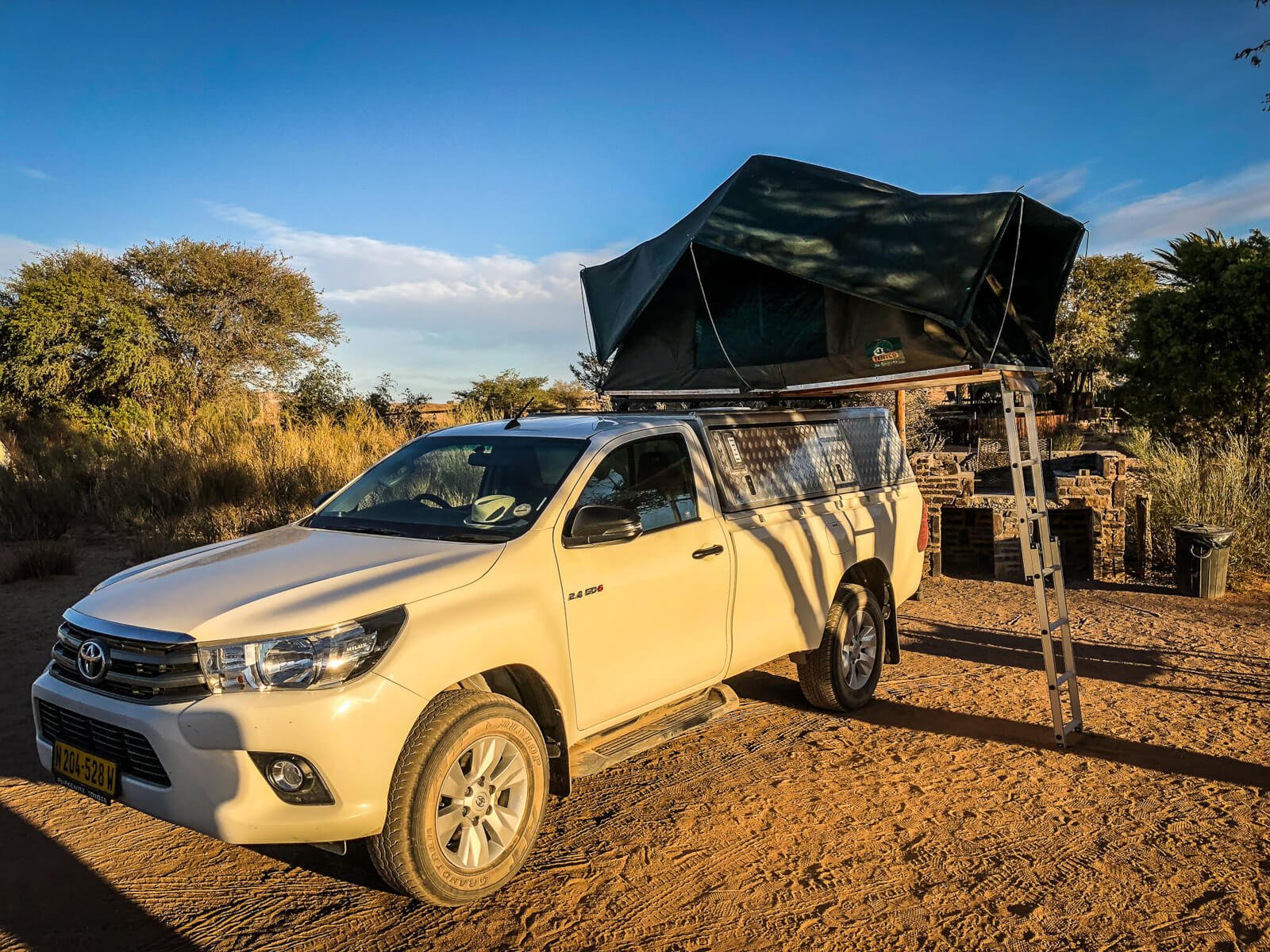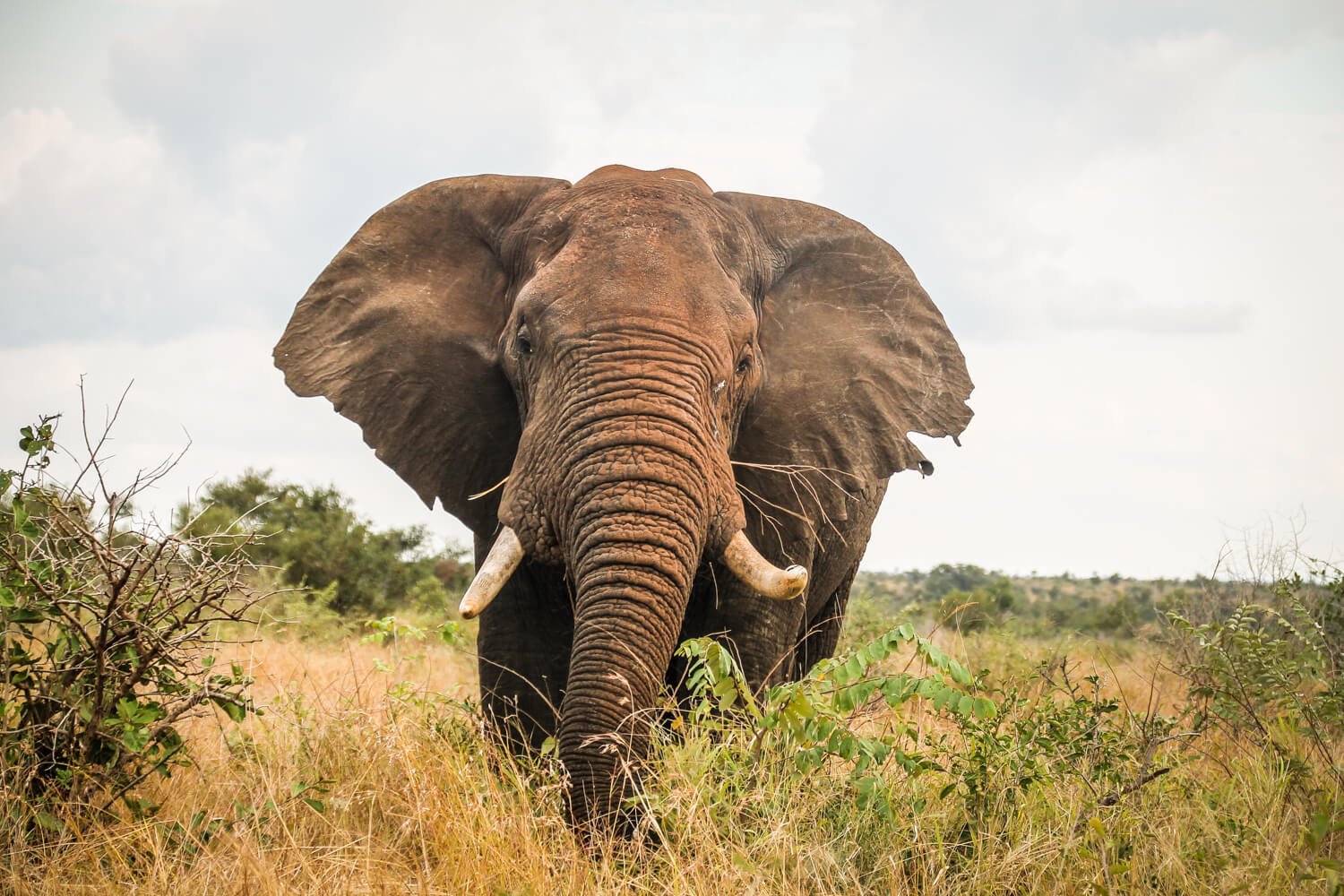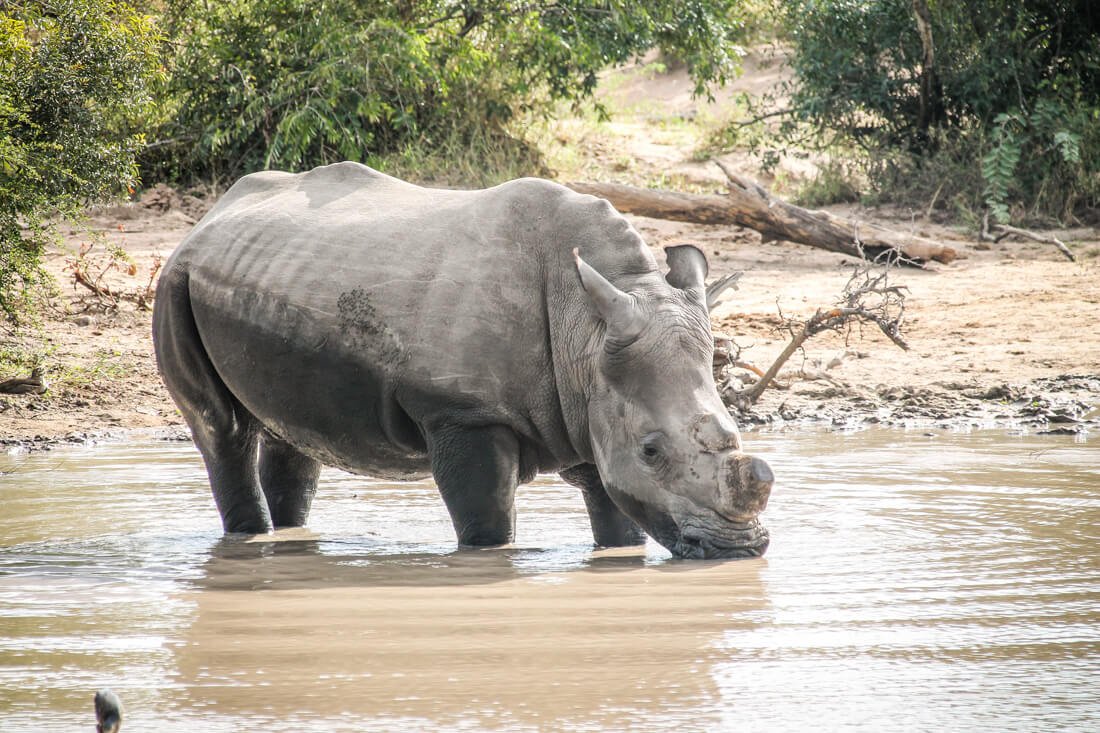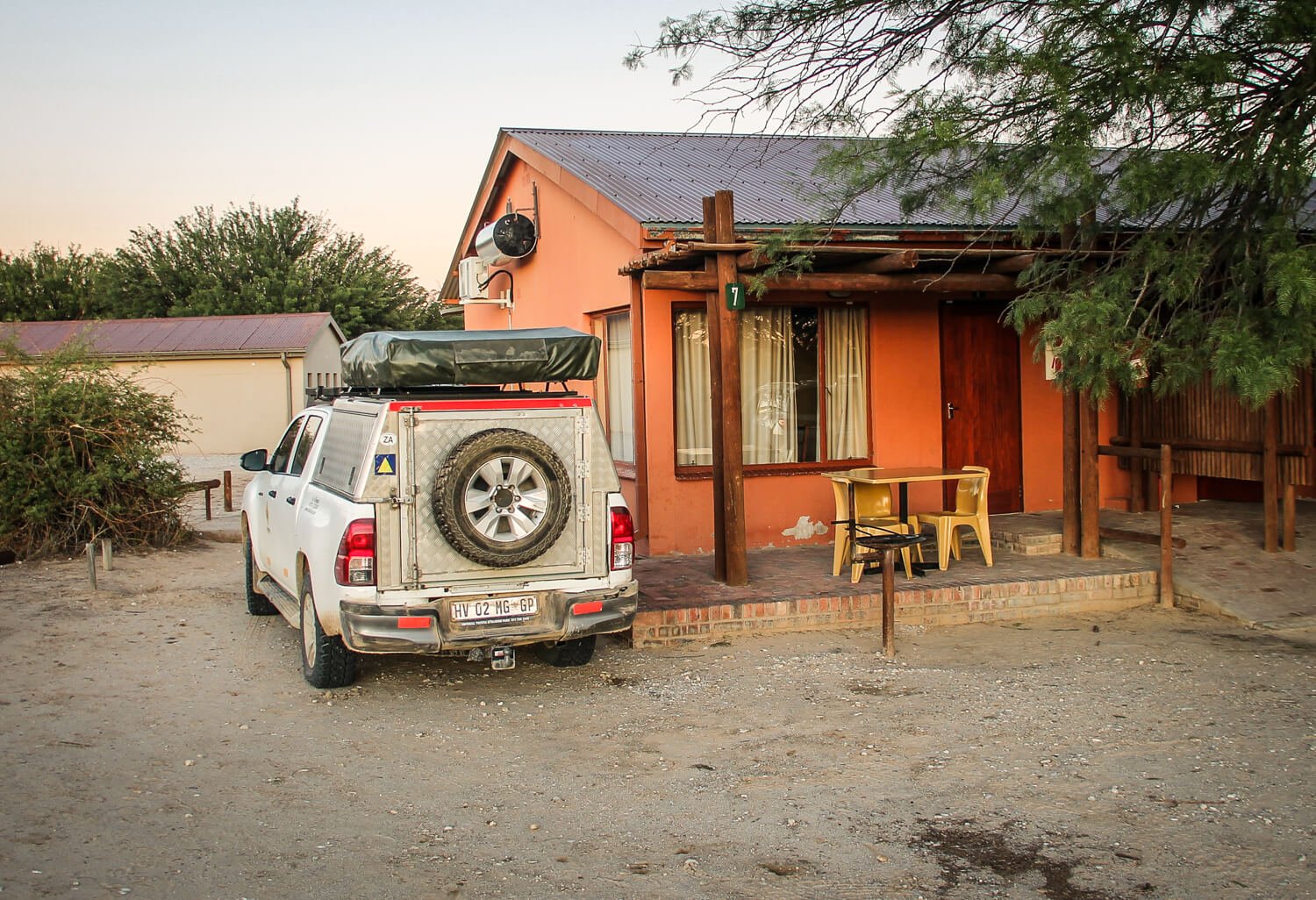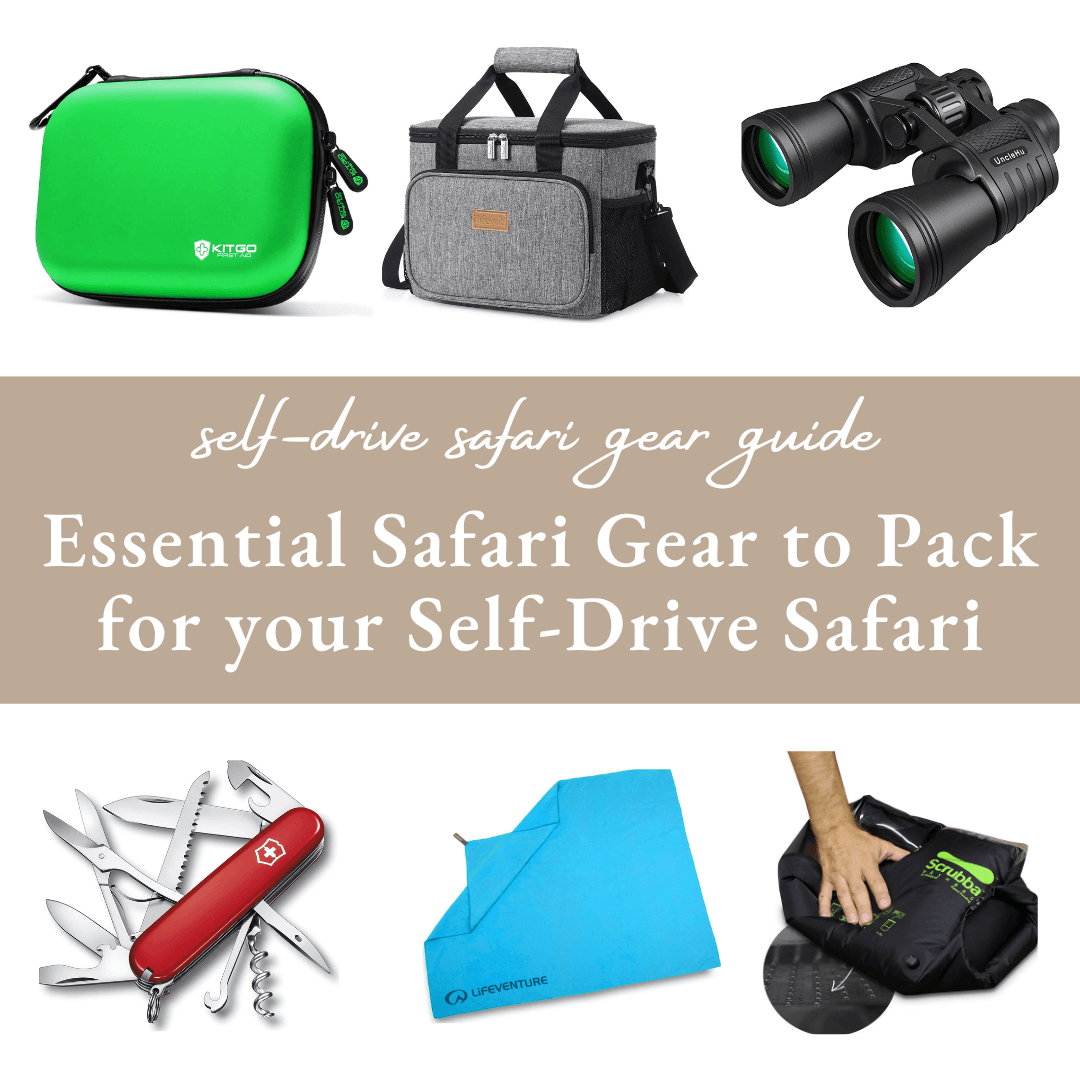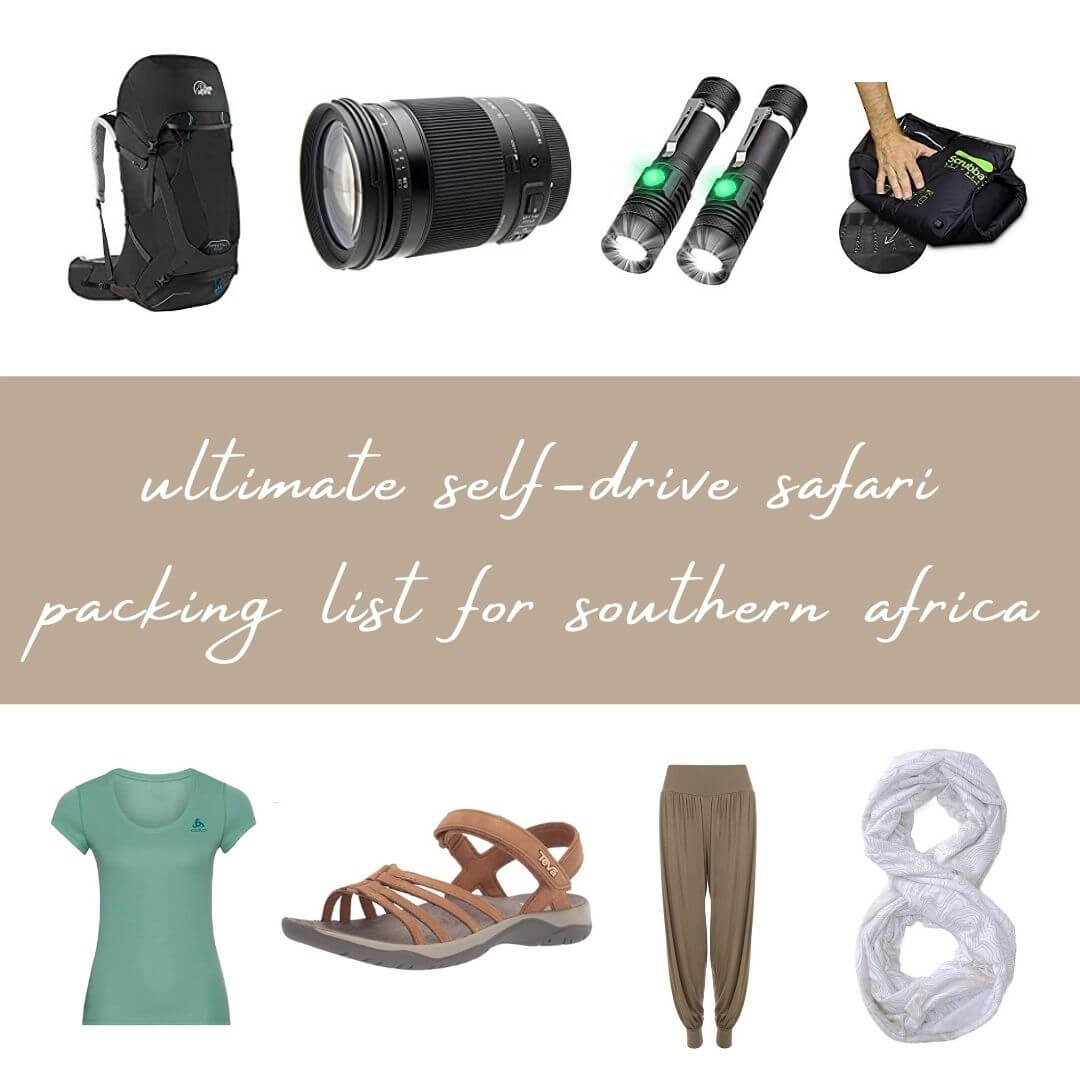How to prepare for your self-drive safari - Part 2
Just to let you know… This post (probably) contains affiliate links, including Amazon Associates links, and we may receive a small commission if you click one. This is at no extra cost to you and allows us to keep our blog running.
If you've been looking into going on safari you might have read articles about what to expect or what to pack and left feeling quite unprepared for your self-drive safari because the article was focussed on a luxury safari. And while white flowy dresses look amazing in photographs, it's not the most practical clothing when you need to set up and break down your rooftop tent or when you go on a bushwalk.
So if you're looking for a practical guide for your self-drive camping safari instead of a fashionable packing list then this 2 part series is for you. The first blog was all about how to prepare before you go on your self-drive safari. While this second part of how to prepare for your self-drive safari is all about what to consider and pay attention to while you are on safari. We will cover anything from tires & fuel to putting up your rooftop tent, making sure you have water, food and money and how to plan your days.
Just a quick note: we're not going into how to plan your trip or how to pick the best destination, I am sure we will write a post about that at a certain time, but we are assuming here you already know where you going.
Tires & fuel
Just like with health & safety there are things you need to consider when it comes to your tires and fuel when travelling to Africa that you otherwise might not think about.
Tires
When it comes to tires and how many spare tires you bring, it really depends on the type of roads you’re going to be driving. If you’re going to South Africa to Kruger National Park, Addo Elephant National Park or Hluhluwe Imfolozi you’re fine with just the one that comes standard with your car.
But when driving through Namibia, visiting Etosha National Park or Kgalagadi Transfrontier Park, we like to bring a 2nd spare tire. The reason for this is the gravel roads that you will be on most of the time and/or because you’re far away from any help if you do have a flat tire.
Be sure to check your tires often (ideally every time before you drive off) as the condition on the gravel roads are tough on your tires (the image below is quite a good indication of how roads can look) and punctures are quite common. This happens more on the public roads because you’re driving much faster and there are often large stones on the edges of the roads, but while it’s less in the National Parks, it can still be an issue if you’re not close to a city where you can get your tire fixed. Just remember that when you have a puncture inside one of the National Parks, you're not supposed to get out of your car.
Next to your spare tires, you need to have the tools to change the tires and a compressor to fill up your tyre pressure. This last one is especially useful when going to Kgalagadi Transfrontier Park, where roads can be so soft that you’re basically driving on sand. So to increase the grip, you will most likely take out some of the air in your tires.
When picking up your 4WD with rooftop tent you get a full walk-around of the car, how to set up year tent as well as explain how to change the tire and where to place the jack. If not, it’s helpful to ask as it might be different to your car at home. If you took out insurance with the rental company, ask them what the procedure is if you get a flat tire. When we had a flat tire, we had to call them and let them know where you are and they will tell you where to go to get it fixed.
Fuel
For fuel applies the same as we mentioned above in terms of parks. A regular tank is often fine but when visiting National Parks that are remote and don’t have filling stations in each camp you can rent a car with a double fuel tank. Alternatively, you can fill up jerry cans just to be safe.
We always like to fill up our tank before entering the park and even when we have a double tank in our car we still fill up every time we come close to half a tank, as you never know where the next filling station will be, if they’re open and if they’re having gas. Within the park, you know where the next possibility is to fill up but we've heard that they don't always have gas available. And when visiting the Kgalagadi Transfrontier Park, we were warned that if temperatures are too hot the fuel starts to evaporate which automatically closes off the system. Fortunately, we have not run into this ourselves but we've always stuck to filling up when possible, even within the game reserves.
It’s custom that the pump attendant will fill up the car for you so don’t do it yourself. They often also clean your windows, it’s free but a tip of R5-R10 is highly appreciated (just like when you park your car at a groceries store or shopping mall where they have parking attendant - to be recognised by their yellow/orange vests)
Food & Water
If you've been in the shops in Kruger National Park, you might have been surprised by how well-stocked they are. These shops have all the essentials you need and more. There is a wide range of cookies, crisps, biltong, canned and fresh fruit & vegetables, meat, pasta, bread, toiletries, water, beer, wine and a lot of souvenirs from postcards, to rugs, jewellery, clothes and hats & scarves.
However, when going to Etosha National Park or Kgalagadi Transfrontier Park, the shops are less stocked. Most of them have water, soda, beer, wine, snacks, cookies, ice cream, canned fruit and vegetables and some souvenirs. So be sure to stock up before you enter the park if you're planning to cook your own meals (which is the only way in some of the camps). And in some of the camps in Kgalagadi Transfrontier Park, you need to be completely self-sufficient which includes bringing enough water and firewood.
When it comes to water, we like to buy several 5-litre bottles just so we’re sure we’re never without. We fill up smaller reusable bottles that fit into the fridge and we have these with us in the car or in the tent. Don’t forget that it can get very warm so you’re losing a lot of fluids by sweating that you need to replenish. Or you can bring a filtering system, as not all parks/camps have fresh/drinking water but we have never relied on just that.
Money
Before you travel always check if your debit cards are activated for the country that you’re going to. If we get the chance, we get some money already at the airport just so we have it. But also so that we have internet or phone reception in case something does not work. We have had troubles in the past with debit cards not working while they worked the previous time or when the ATM said our type of debit card was not accepted, so we also bring credit cards as these are accepted more than debit cards. Visa and MasterCard are among the most widely recognised.
However, the more remote you are, the more cash you will need to pay for gas and other essentials. And it’s always good to have some coins for tipping as mentioned above. While most National Parks have an ATM don’t always count on them working or have money. In Namibia, you can pay with Namibian Dollars but also with South African Rand. You might even pay with Namibian Dollars and get your change in South African Rand as they are worth the same.
Camping with a rooftop tent
We’ve often read the advice to not go camping on safari because you’ll have to take it down before you head out in the morning. Or if you do want to camp and expect to stay multiple nights in one place, that it might be better to buy or rent a separate tent instead of having a rooftop tent as you’ll be able to get out into the park quicker in the morning and it can save your spot for when you get back.
We have stayed in private game reserves, in chalets in National Parks, camped with a rooftop tent in National Parks and I’ve also camped on the ground in several parks and reserves and still prefer to camp when going on safari. And when it comes to camping, I would not go back to camp on the ground. Why?
Rooftop tents keep you off the ground so you’re less impacted by cold, rain, bugs who crawl over the ground and uneven terrain. We’ve had a Jackal go through our bin looking for scraps and a Baboon trying to do the same and in both instances, I was quite happy to be off the ground.
Besides that, a rooftop tent has a lot more space, has a comfy mattress (which we definitely prefer over a 1cm mat on the ground) and when you close the tent, you can leave your bedding and pillow inside. They also have more windows that you can open up to cool the tent. And believe me, you want that. When you’ve driven around all day in the sun, the inside of your tent is also very warm.
In regards to the time it takes to set up your rooftop tents; it’s actually quite quick. Yes, it takes a little bit of practice but after we did it a couple of times you’re able to set it up in less than 10 minutes. Not convinced? Here’s a video about setting up a rooftop tent and here is one about taking down a rooftop tent.
Do you want it even faster? Then go for a hard-top rooftop tent. These are over the full length of the car and are opening with a pop-up mechanism. The downside to this is that a hard-top rooftop tent has less space than a softshell tent.
our routine when we’re arriving at a campsite
Even though we’re not sleeping on the ground, we’re still looking for a spot that’s relatively flat as you will need to place your stairs on the ground as this supports the tent. Ideally, so not like in our picture below :), the ladder is at an angle for best support and to keep the bottom level so you’re not rolling to one side.
Once we’ve found the perfect spot we set up the tent together. As you can see from the video’s the guy setting it up keeps walking around the car, so we’ve found it quickest to do it together. We both stand on a wheel (yes, it does involve a bit of climbing on your car) and start opening the zipper to take off the cover. Then we release the straps on the sides that keep the tent closed. Then Sam releases the ladder and from there, I take (yes, we have very clear roles of who does what haha) the ladder and pull it out completely, fold open the tent and put the ladder on the ground. The last thing Sam does is secure the hooks to open the flaps in front of the windows and then puts coal on the fire for dinner. In the meanwhile, I crawl into the tent and make our beds.
Once I have finished making the bed I pack our bag for the following day. This might sound a bit strange so let me explain. As I mentioned above in this section, you always want to be in the park as soon as possible. So to save time in the morning, we have our toiletries within easy reach in the car and we take up a separate bag into the tent. This already has our clothes in it for the next day as well as some socks, a hoody and sweatpants in case it gets cold during the night (we have had to use this because it can get cold) or for bathroom breaks, toilet paper and a separate small ziplock bag with tissues, strepsils, paracetamol just in case.
Of course, the flashlights also come with us when we go to sleep and we wear our sandals as they don’t take up too much space in the tent.
In the morning, we also pack up the tent together in almost the same order, just in reverse. It’s a bit more work to fold it up properly vs when you pull it out, but this also just takes a couple of practise runs and you’ll be able to leave the camp within no time.
Planning your days during your self-drive safari
The larger National Parks sell maps of the parks in their shops with the opening times of the camps, shops and other facilities, distance charts and a map with all the roads, picnic spots, lookouts, hides and waterholes. These are great to plan your route during the days as road maps often don’t have all the roads on there.
When you're travelling in between the camps try to leave as soon as the gates open as you will have the chance to see lions, cheetahs and leopards still walking around or at the waterholes instead of laying underneath (or in) the trees which they will do when it becomes warmer. We always aim to leave as soon as the gates open, taking a quick shower before we pack up the tent and often have some cheese rolls in the car. Then a bit later in the morning, we go to a picnic spot.
During the day, you can plan your viewing along the routes of the waterholes, lookouts and hides.
Later in the day when it starts to cool down is also a great time to go past the waterholes. Some National Parks have floodlit waterholes at the camps, which are great for viewing the game.
The animals in the park
It is important to keep reminding yourself that you are watching wild animals. While it can almost feel like you’re going to a zoo when you’re on safari, you are in their world and they are the boss. So it’s up to you to follow the rules to make sure both you and the animals remain safe.
When you buy one of the maps the larger National Parks sell in their shops with the opening times of the camps, shops and other facilities, you will also find some general rules:
You have to stick to the speed limits so you don’t kill any animals when speeding.
You can’t go off the official roads to get closer to the animals, they need their own space and be able to walk away
Always stay in your car unless you’re on a picnic spot, lookout or other designated area
You’re not allowed to feed the animals because they can come depended on it and will become more aggressive towards humans. We have seen several hyena’s pacing the fences of camps in Kruger on our last visit because of it. And if they do become too aggressive they will be shot.
And you need to keep your litter with you and not just throw it out of your car
But that’s not all you need to consider. Always keep in mind that they are wild animals and they can be unpredictable, especially when they feel they are threatened, which can happen when you’re too close, you’re blocking their path or when there are young animals involved.
So always make sure, especially when it comes to elephants and rhino’s, that you give them enough space (just watch this video to see what can happen). Elephants often eat from the trees along the road or you can already see them coming towards the road they want to cross. The cars in the below picture, for example, are a bit too close in my opinion. And with the second car behind them, they will be quite slow in backing up if the elephant does charge. You might get great images this close, but your photographs should not trump your safety or disturb the animals.
The noise and lights from cars can also disturb animals so don’t honk your horn (no joke, we have seen a car race in front of a large male elephant crossing the road and honking at it). Don’t play music when you have your windows open and don’t forget to close them when around predators. And if you’re going to be standing still for a while, turn off your engine.
On the other hand, you can also use animal behaviour to your benefit. When animals are at a waterhole and are all staring in the same direction it usually means a predator is in the area. See vultures circling? There probably is a kill close by and definitely worth checking out.
Other tips for your self-drive safari
While we’re huge fans of self-drive safari, you are driving all day in your car. So it’s great to mix your self-drive safari with a guided safari so that you can just enjoy watching the animals. You can go for a morning, evening or night drive or a walking safari.
There are no guarantees to what you will see. You can plan your days as mentioned above to increase your luck, but it can happen that you won’t see animals for hours.
You need to be patient and open-minded, not just when you’re not seeing animals. The roads can be worse than expected and travel in between camps can take longer, you can get stuck in the sand (like we did in Kgalagadi Transfrontier Park), you can get flat tires and the heat can be tough.
Check for the sighting boards at the camps. Everyone can record what they have seen where. Of course, it’s no guarantee they are still there but you will start to see patterns.
Ask other visitors what they have seen. If a car passes you and slows down, there is a chance they want to tell what they just saw.
But on the other hand, just because other cars don’t stop doesn’t mean that there is nothing to see
Give other visitors enough space as well. Everyone wants to see the same but no need to block another car (it does happen more then you think)
And a few more when it comes to camping on your self-drive safari:
Make sure that you securely pack all your food in your car and don’t keep food in your tent. I’ve seen monkeys open up tents and eat all the food and seen them trash bins and anything that was left outside and not secure. And if you’re on a campsite without a fence, be aware that elephants have a love for citrus fruit and can smell it from far away.
Gravel roads are dusty. So keep your stuff packed and if you take a backpack (which we do recommend over a suite case) put it back into the flight cover in the back of your car so the dust does not get inside your backpack. And we always bring a brush to brush our packs off.
As a last note: in this post, we’ve tried to make you aware of the differences between the different National Parks. But just to be sure, we want to mention that if you’ve gone on a self-drive to Kruger and did not have to plan or prepare your stay much, don’t expect the other parks to be the same. Kruger National Park is in that sense an exception, with a lot of camps and different types of accommodation, fully-stocked shops, restaurants, fuel, water and good roads. A trip to Etosha, Kgalagadi, Serengeti etc are completely different and require more planning before you leave and while you’re there in regards to water, food, fuel, wood and safety. I think for us it was great that we went to Kruger Park (and through South Africa) a couple of times on our own before going to Kgalagadi and to Etosha.
And there you have it...
..part 2 of how to prepare for your self-drive safari. We hope you enjoyed it and if you have any questions just leave your comments below. And if you are planning your own self-drive safari let us know below where you are going.
In case you missed the first blog, this was all about how to prepare before you go on your self-drive safari. From picking the right car and equipment you need for a camping safari to how to plan your route and health & safety.
Want to know more about great self-drive safari locations and how to prepare for a self-drive safari? Keep on reading the following blogs:
Ultimate Guide for self-drive safari in Etosha National Park - Namibia
Ultimate guide for a Self-drive safari in Kgalagadi Transfrontier Park
If you don't want to miss any of our upcoming posts you can sign up below and you'll get them straight in your inbox.
If you're on Pinterest you can save this post for later.
you’ll also love
Leave a Reply
and if you enjoyed this blog, found it useful & think it could help others, use the icons below to share on social media and spread the love





